Common orchid diseases and their treatment
Orchids - very beautiful flowers. Each of its kind is unique and original. Proper care of the plant will allow you to observe gorgeous flowering and abundant greenery from year to year. But there are times when the bush begins to wither before our eyes. The reasons may be due to improper care or a disease that has appeared.
Content:
- The consequences of improper care
- Orchid diseases: types and signs
- Effective treatments
- Florist tips: how to properly care for orchids
The consequences of improper care
Many people want to enjoy the blooming of a tropical flower on their windowsill. But not everyone who has acquired a flowerpot with a shoot knows how to properly care for a capricious specimen.
It so happens that, through ignorance, the gardener diagnoses a life-threatening orchid. Immediate therapy begins, which may result in the death of the pet. You should not take drastic measures, but pay attention to the conditions for keeping the flower.
There are several signs that indicate malaise:
- Wrinkled, sluggish leaves with dots prints - the pet is hot, there are negative changes in the roots. If the points are very pronounced - the result of a lack of moisture. Damaged greens turn yellow, dry out and disappear. Overheating occurs in winter due to the radiating heat of the battery, in summer - due to direct sunlight. Under conditions, moisture evaporates at a rapid rate, without lingering in the cells of the bush. When the roots suffer from heat, the nutrient fluid is either not absorbed at all, or in minimal quantities.
- In other cases, a wilting state can occur due to abundant watering and stagnant water in the sump.
- Yellowing of the leaf - a change of residence, causing a stressful state, lack of vitamins (potassium, iron), decay of roots, natural aging of shoots.
- A crack in the center on the green canvas - the reasons are accidental damage, abundant irrigation at the time of cold ventilation, dry air and temperatures from 300.
- Dark spots with yellow edging are the result of prolonged exposure to the sun or near a battery.
- Growths, swellings, bumps on the outside of the green shoot - due to swelling of the shoots as a result of abundant glaze, mechanical damage.
- Spots, stripes on the sheets - burns after watering, appear as a result of irrigation in the bright sun. The drops remained, the sun dried them and accidentally burned through the delicate green coating.
- A change in the upper young shoot, its decay - occurs if moisture enters the center of the bush.
Thus, it is recommended to carefully monitor the pet's care. Perhaps there is a deplorable kind of wine here.
Orchid diseases: types and signs
Diseases tend to destroy years of work and nursing a capricious beauty in a short time. She easily becomes infected with various ailments and takes on various parasites.
Allocate significant ailments:
- Black rot - the problem lies in the temperature regime and the colonization of pests.
- Fusarion is characterized by a yellowing green cover, the appearance of spots. Sheets to the touch are soft, lethargic, twisted, there is a bloom of a pink hue.
- Brown rot - spots of a light earthy hue, watery consistency are present, intensified by darkening of the affected areas and grows over large areas. Frequent watering and a cool room give a start to accelerate the development of the disease.
- Root rot is expressed by the acquisition of the surface of young shoots of a dark shade. When probed, the roots become soft, growing rotting is visible root system.
- Gray rot - gray spots appear with prominent fluffy villi. The leaves are affected, then the soil, the inflorescences are the last to suffer. A distinctive feature is small brown blotches on the petals. The reason is the frequent application of fertilizers with a lot of nitrogen.
- Anthracnose. Small rounded spots appear with clear outlines of an earthy hue. They can grow from several single closely spaced ones, reborn into one large black tone. The neoplasm dries out the damaged area, leaving a dent in the body of the leaf. The reason is the lack of fresh air.
- Leaf spot is a dangerous disease of infectious origin. The culprits are midday rays, excess fertilizer. Weeping islands are formed on the cavity of the appendix.
- Powdery mildew - characterized by the appearance of a sticking white bloom. The affected areas dry up, the flower dies.
- Viral diseases are rare. There are spots in the form of stripes and circles. Marble stains are noted on the shoots.
Each of the ailments presented has its own symptoms. The only thing that unites them is the cause of the disease - an increase in temperature and an increase in humidity in the room.
Effective treatments
Few steps are required to reverse the effects of inappropriate care. If overheating is detected, the bush must be removed from the battery (in winter), moved deeper into the room. At the same time, make sure that the bush has enough daylight.
Otherwise, it is recommended to include additional fluorescent lamps lighting... If the plant begins to wither and the reason lies in waterlogging, drain excess liquid from the pan, dry it, do not water it for 2-3 weeks.
The flower itself will tell you when it should be provided with moisture - the roots will become faded and inconspicuous, they will deplete.
With sufficient watering, the tone of the roots will acquire a rich green hue. In the event of burns in the summer, it is recommended not to water in the early hours, so that foci of inflammation do not form on the leathery tissue. In addition, shade at lunchtime.
Black rot:
- Treatment. Remove problem parts, spray with Bordeaux liquid. Clean from the affected soil and transplant into a sterilized substrate. Spray nearby flowers with Bordeaux or a preparation containing copper.
- Who can get infected: Cattleya, Parfiopedilum
Fusarion:
- Treatment. 10-day treatment with Fundazol (0.2%), by immersing the entire pot in liquid - 3 times in 24 hours. Stop spraying - contributes to the growth of malaise, ventilate the room.
- Who can get infected: Phalaenopsis, Epidendru, Miltonia.
Brown rot:
- Treatment. Minor damage - cut off part of the shoot with the affected area, process. A massively spread ailment - it will not be possible to save, destroy, irrigate with copper sulfate once a month.
- Who can get infected: Cymbidium, Cattleya, Parfiopedilu, Phalaenopsis.
Root rot:
- Treatment. Spray with Topsin's or Fundazol's solution (0.2%), 3 times after 2 weeks.
- Who can get infected: Parfiopedilum, Miltonia, Cymbidium.
Gray rot:
- Treatment. Cut off damaged parts to a healthy zone, irrigate the entire bush fungicides... In case of relapses, the drug for the fight should be changed - the fungus develops addiction to the drug that is affected. Recommended - Immunocytophyte.
- Who can get infected: Cymbidium, Cattleya, Phalaenopsis
Anthracnose:
- Treatment.Remove the affected leaves entirely, process the cut areas. For healing - copper-containing substances. Remove watering and feeding... Air humidity - no more than 70%, frequent ventilation.
- Who can get infected: Miltonia, Phalaenopsis, Ontsirius, Parfiopedilum.
Leaf spot:
- Treatment. Remove all areas with symptoms that appear. Do not water for a week, treat with chemicals.
- Who can get infected: Phalaenopsis
Powdery mildew:
- Treatment. Spray with a solution of colloidal sulfur, Skor, Topsin-M preparations.
- Who can get infected: all types.
Viral disease:
- Treatment. There is no cure. Remove from healthy plants - destroy.
- Who can get infected: all types.
Thus, if you do nothing, you can lose a valuable copy. At the first signs of illness, it is recommended to take up the weapons of struggle.
Florist tips: how to properly care for orchids
Orchids - love abundant sunshine. But in the daytime they prefer partial shade, the bright rays of the luminary can burn the delicate skin of the green cover. It gets along well if you follow some rules for the content of an exquisite specimen:
- It does not feel very comfortable on the northern windows. Normal light mode is 12 hours. If it is not fulfilled, then either you should choose another place of residence, or highlight phytolamps... Otherwise, the arrow will not be able to bloom and develop fully.
- For any type of exotic beauty, an acceptable temperature is +27 C. Some species also tolerate an increase in degrees up to +32 C. In winter, the plant feels good with an indicator of +18 C. The minimum threshold is +13 C. At this stage some species begin to freeze, they urgently need to be moved to a warm room.
- Watering is encouraged, but not plentiful. You should find your own approach to each type. In one case, by pouring into a tray, the buds bloom almost all year round. With another bush, this method is not suitable, it begins to wither at a rapid pace. Then it makes sense to try to irrigate with a shower under direct streams directly into the ground. In this way, the entire soil is moistened. It is recommended to water so that there is no stagnation of water, since excessive liquid is detrimental to the roots. Constant hydration is necessary only during the budding and flowering period. With a lack of moisture, the leaves wrinkle, the buds fall off. Water is required at room temperature. A soft, settled, or boiled, chilled liquid works best. In summer, if necessary, watering is increased to a maximum of 2-3 times a week.
- Doesn't need abundant fertilizers, they can be detrimental to healthy growth. Top dressing is useful only once every 4 weeks. Frequent supplements tend to lower immunity.
Thus, the orchid is a rather capricious lady, both in choosing a suitable place and in watering. To prevent the flower from dying, you should carefully monitor its condition.
More information can be found in the video:



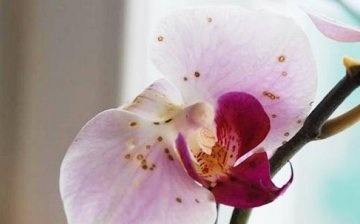
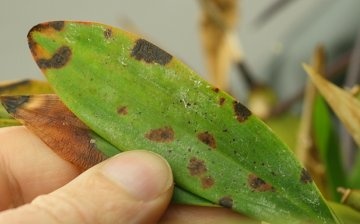
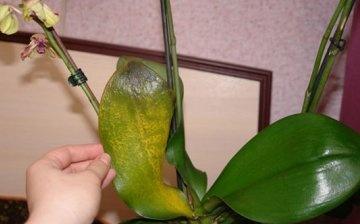
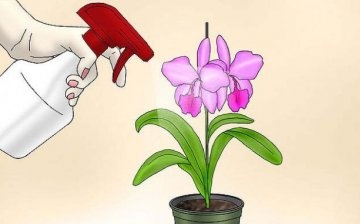
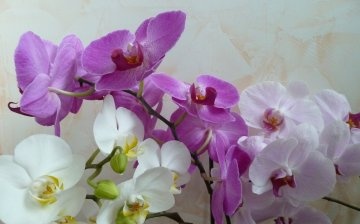





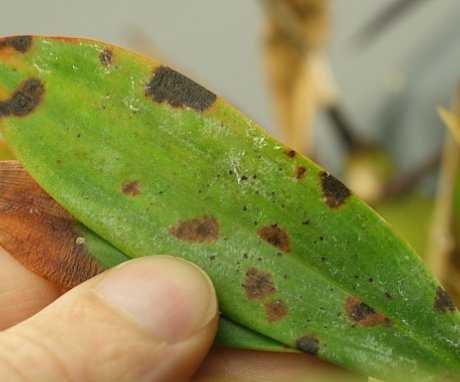
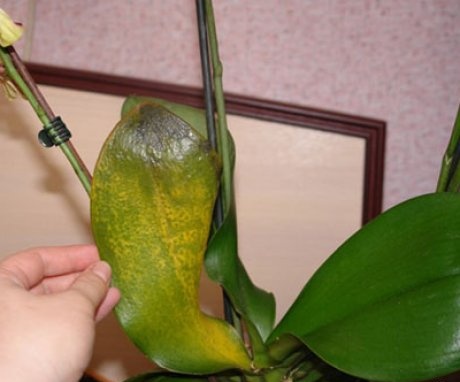
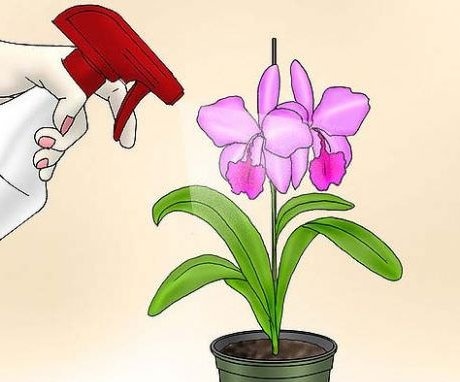

I love flowers very much. In any form and quantity, but my real passion is orchids. The house is full of them. All my friends give gifts for the holidays, knowing my hobby, only these are problematic flowers. This is the truth. They get sick often and a lot. Just like some people. Often you have to seek treatment and change the rules of care. I am suffering with this, but I cannot refuse beauty. Who else is with me?